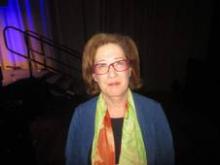VANCOUVER – When diabetes is diagnosed from ages 15 to 30 years, type 2 patients are less likely than are type 1 patients to reach their 50th birthday, according to investigators from the University of Sydney.
Even just a few years after diagnosis, young type 2 patients have a worse cardiovascular profile and worse cardiovascular disease, which leads to an earlier death.
“We pay less attention to type 2 than type 1 in young people. They’re not as sick, and don’t develop [diabetic ketoacidosis] if they miss a treatment. But young type 2 is not a milder form of diabetes in young people, and its detrimental impact occurs early. Before we know what’s going on, patients are middle age, and it’s too late,” said investigator Maria Constantino, a Ph.D. candidate, nurse, and diabetes researcher and educator at the University of Sydney.
Screening for type 2 diabetes “should start at a young age in at-risk groups,” and diabetes cardiovascular risk criteria should be reconsidered so that younger type 2 patients aren’t overlooked because of their age. Current criteria likely “lead to delay in preventive treatment” in the young, she said.
The conclusions come from a review of diabetes patients treated since 1990 at the Royal Prince Alfred Hospital in Sydney (Diabetes Care. 2013 Dec; 36[12]:3863-9).
The investigators compared 354 type 2 patients with 470 type 1 patients diagnosed from age 15-30 years. By around the age of 40 years, 11% of the type 2 patients had died, vs. 6.8% with type 1 (hazard ratio, 2.0; 95% confidence interval, 1.2-3.2; P = .003). Strokes, coronary artery disease, and other macrovascular complications were also far more common in the type 2 group, and they had worse hypertension and dyslipidemia despite taking more drugs to combat both. Type 2 patients also had more albuminuria and neuropathy.
The differences occurred despite the fact that type 2 patients smoked less, had a slightly shorter duration of disease (11.6 vs. 14.7 years), and equivalent glycemic control with their type 1 counterparts, with a mean hemoglobin A1c of 8.1% in both groups. They were heavier, however, with a mean body mass index of 32.2 kg/m2 vs. 25.6 kg/m2 in type 1 patients.
In short, young-onset type 2 is a “more lethal phenotype of diabetes. We are not saying one type of diabetes is more important; we need to conquer both.” But in young type 2 patients, “we need to focus on more than just glycemic control.” Cardiovascular risk factors are “detectable early, and treatable,” Ms. Constantino said.
The investigators also compared their 354 young-onset type 2 patients with 1,062 patients diagnosed from age 40-50 years.
By the time they were about 50 years old, young-onset patients were 6.5 times more likely to have died than were their age-matched peers without diabetes in the general Australian population. The peak in excess mortality for those diagnosed in their 5th decade came at about age of 65 years, with a risk of death about 2.5 times higher than nondiabetic peers in the general population.
“The impact of type 2 is much higher the younger a person is. You can argue that in our enthusiasm to diagnose diabetes, we are casting our screening net wider and wider, and take pride in diagnosing many elderly patients with diabetes, but we should not lose sight of the fact that finding and treating an elderly person with diabetes has much less impact than finding and treating one in a young age group,” she said.
Ms. Constantino has no conflicts of interest.


